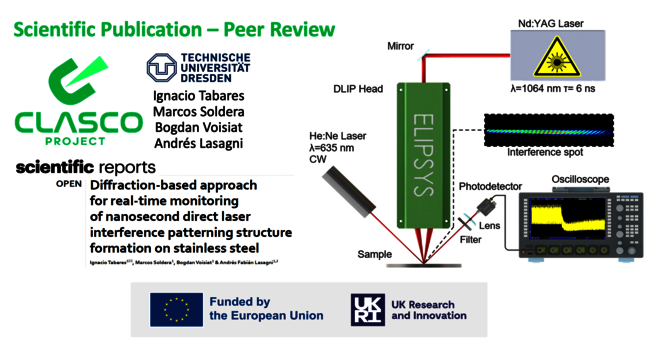We are thrilled to announce the first peer-reviewed publication from the CLASCO project in the high impact journal Scientific Reports by Nature, authored by Ignacio Tabares, Marcos Soldera, Bogdan Voisiat, and Andrés Lasagni:
Tabares, I., Soldera, M., Voisiat, B. et al. Diffraction-based approach for real-time monitoring of nanosecond direct laser interference patterning structure formation on stainless steel. Sci Rep 14, 9599 (2024).
This pioneering work investigates the monitoring of the Direct Laser Interference Patterning (DLIP) process using time-resolved reflectivity measurements, providing valuable insights into the melting and growth times of the resulting structures.
The study highlights several significant findings:
• The melting times in ns-DLIP increased with the applied laser fluence, ranging from 73 ns at 1.9 J/cm² to 380 ns at 5.9 J/cm².
• Simple numerical simulations showed a good agreement with the experimental results, validating the method's accuracy.
• The study identified two distinct regimes during structure formation: an initial phase of rapid growth in structure depth, followed by a phase of more gradual change.
• Growth rates in the first regime varied from 11 to 57 nm/ns, depending on the laser fluence.
• In the slower growth regime, speeds of approximately 4 nm/ns were calculated for higher fluences, while a second growth rate regime was not observed for the lowest fluence tested.
For a detailed exploration of these findings and their implications for future research and applications, read the full paper.


